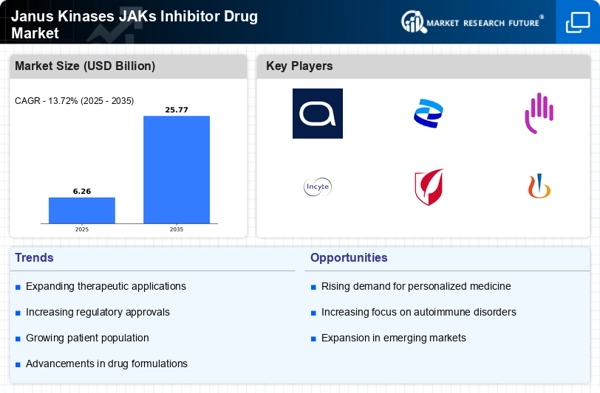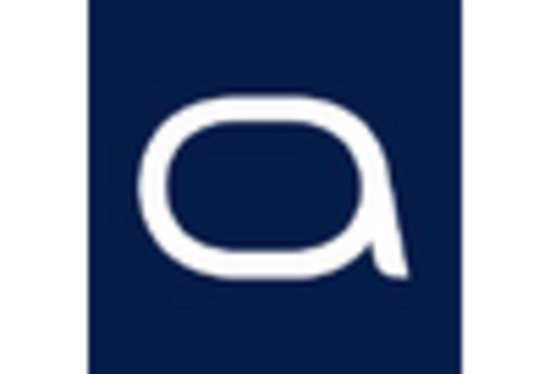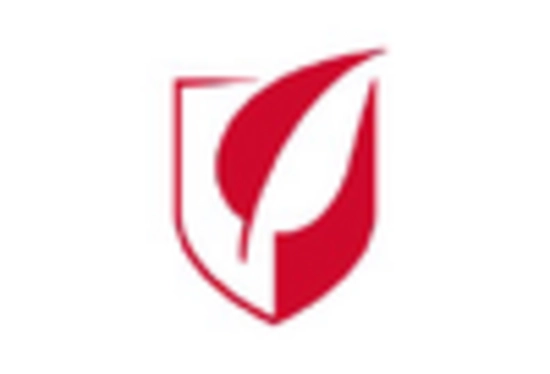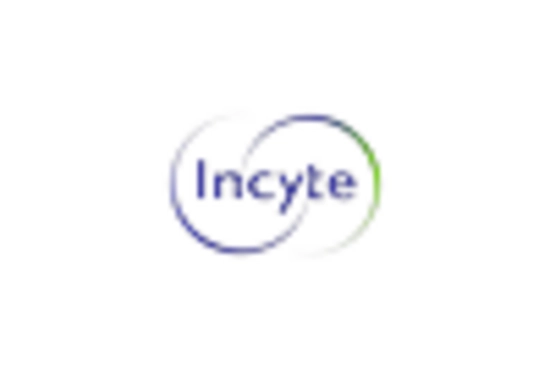Advancements in Drug Development
The Janus Kinases JAKs Inhibitor Drug Market is significantly influenced by advancements in drug development technologies. Innovations in biotechnology and pharmacology have led to the creation of more effective and safer JAK inhibitors. For instance, the introduction of novel compounds with improved selectivity and reduced side effects has enhanced the therapeutic landscape for patients. The market is projected to grow at a compound annual growth rate of around 15% over the next few years, reflecting the positive impact of these advancements. As pharmaceutical companies continue to invest in research and development, the Janus Kinases JAKs Inhibitor Drug Market is likely to witness a surge in new product launches and expanded treatment options.
Rising Awareness and Patient Advocacy
The Janus Kinases JAKs Inhibitor Drug Market is also being propelled by rising awareness of autoimmune diseases and the role of JAK inhibitors in their management. Patient advocacy groups are increasingly active in educating the public and healthcare professionals about these conditions and available treatment options. This heightened awareness is leading to more patients seeking diagnosis and treatment, thereby increasing the demand for JAK inhibitors. Furthermore, as patients become more informed about their treatment choices, the Janus Kinases JAKs Inhibitor Drug Market is likely to see a shift towards more personalized medicine approaches, enhancing patient engagement and adherence to therapy.
Regulatory Approvals and Market Access
The Janus Kinases JAKs Inhibitor Drug Market benefits from favorable regulatory environments that facilitate quicker approvals for new therapies. Regulatory agencies are increasingly recognizing the need for innovative treatments for chronic diseases, leading to expedited review processes for JAK inhibitors. This trend is evident in the recent approvals of several JAK inhibitors for various indications, which have broadened market access and increased competition among manufacturers. As more products gain regulatory approval, the Janus Kinases JAKs Inhibitor Drug Market is expected to expand, providing patients with a wider array of treatment options and driving overall market growth.
Growing Prevalence of Autoimmune Diseases
The Janus Kinases JAKs Inhibitor Drug Market is experiencing growth due to the increasing prevalence of autoimmune diseases such as rheumatoid arthritis, psoriasis, and inflammatory bowel disease. These conditions affect millions of individuals worldwide, leading to a heightened demand for effective treatment options. According to recent estimates, autoimmune diseases impact approximately 5-8% of the population in various regions, creating a substantial patient base for JAK inhibitors. As healthcare providers seek innovative therapies to manage these chronic conditions, the Janus Kinases JAKs Inhibitor Drug Market is poised for expansion, driven by the need for targeted and effective treatments that can improve patient outcomes.
Strategic Collaborations and Partnerships
The Janus Kinases JAKs Inhibitor Drug Market is witnessing a trend of strategic collaborations and partnerships among pharmaceutical companies, research institutions, and healthcare organizations. These collaborations aim to accelerate the development and commercialization of JAK inhibitors, leveraging shared resources and expertise. Such partnerships can lead to innovative clinical trials and the exploration of new therapeutic indications, thereby expanding the market. As companies join forces to enhance their research capabilities, the Janus Kinases JAKs Inhibitor Drug Market is likely to benefit from a more robust pipeline of products, ultimately improving patient access to effective therapies.

















Leave a Comment